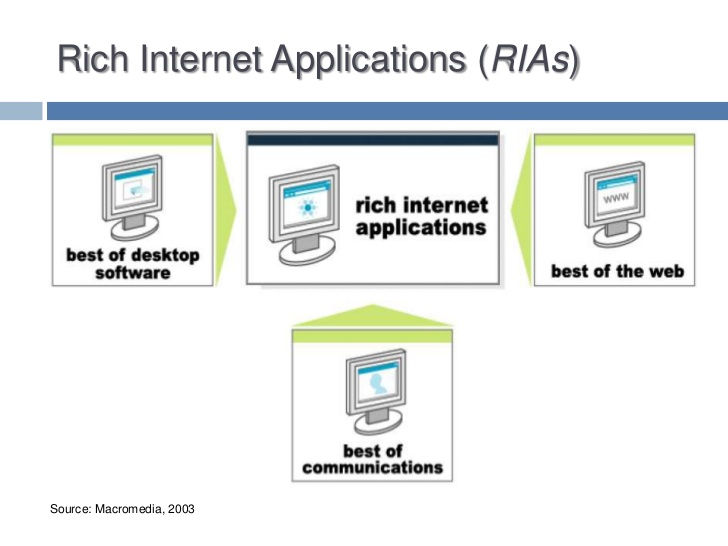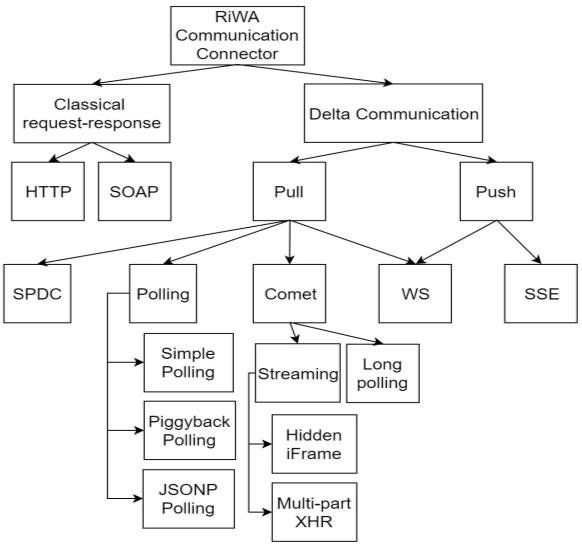RiWAs
- hassamadhi9594
- May 22, 2019
- 3 min read
(RIA) are Web-based applications that have some characteristics of graphical desktop applications. Built with powerful development tools, RIAs can run faster and be more engaging. They can offer users a better visual experience and more interactivity than traditional browser applications that use only HTML and HTTP. Rich Web-based applications
•Use advanced GUIs
•Use Delta-Communication
•Provide rich user experience
Most of the web-based applications nowadays are RiWAs

Rich Internet applications: The tools
The list of current technologies that can be used to build modern RIAs is long. Here are some of them:
Rich GUIs in RiWAs use Delta-Communication to communicate with the server components
•DC happens behind the GUI - Eliminates page refreshes
•DC can process asynchronously - Eliminates page freezing
•DC works faster - Eliminates the work-wait pattern
Delta-Communication
The AJAX technique uses the data-pull mode, and supports both synchronous and asynchronous modes by API. Through experiments we have noted that the DC technique implemented by AJAX is the simplest form of the DC. Furthermore, the underlying concept used to implement the AJAX technique can be developed in other environments – like desktop applications – using other TTs like WS or C#, even without JS and/or XHR object. We have successfully developed and tested the technique using C#.Net, to develop a desktop application component, which communicates with server components using data-pull DC, asynchronously. Moreover, the same DC technique is utilized in other advanced DC technologies like WS, for the data-pull mode.

Simple-Pull-Delta-Communication (SPDC) can be seen as the simplest form of DC
•Used in AJAX
•Single XHR request to the server
•Client-side: Native JS support
•Server-side: special technology is not needed
Synchronous and asynchronous transmissions are two different methods of transmission synchronization. Synchronous transmissions are synchronized by an external clock, while asynchronous transmissions are synchronized by special signals along the transmission medium.
Different types of technologies and techniques available
Technological advances happen every day, and business owners such as yourself feel pressured to keep up with the latest technology or risk losing your competitive edge. In business, technological innovation can take many forms, including computerization and automation of necessary systems and processes. Although new technologies can be exciting and alluring, a business owner should be familiar with both the pros and cons of innovation.

JS Based SPDC
Aligning to the definition of the SPDC, we can look at the AJAX technique as a JS implementation of the SPDC, which is limited to the browser based applications. We find that the term AJAX expresses some flaws, and it is outdated with regards to the latest API version of the XHR object. Due to the evolution of the XHR object, the technical scope of the AJAX had been expanded in terms of both XML and
Asynchronous aspects.

In W3C’s first draft of the XHR object, the result from the
server for a client request was accepted – as the name of the
XHR object implies – in XML [22]. However, according to
the latest draft, the XHR object supports various data types,
such as plain-text, XML, JSON, Blob [7].
Furthermore, the XHR object has the ability to develop the
rich communication not only in asynchronous mode, but also
in synchronous mode, since the XHR API contains a setting
to configure the synchronous/asynchronous mode. However,
even using the asynchronous setting of the XHR object, still
AJAX features can be developed and presented to the users to
perform DC in synchronous manner, and the mode of the DC
is determined by the way the feature is designed. In later rich
communication development technologies like WS, a similar
setting is not included, and the developers are given the
flexibility to determine, in which mode the DC should be
developed.
Based on these facts, considering the outdated and limited
impression of the term “AJAX”, we propose the term
“JavaScript-based Simple Pull Delta-Communication”
(JS-SPCD), in place of the term “AJAX”. The term JS-SPCS
indicates that it utilizes the SPDC technique, and developed
using JS.



Comments